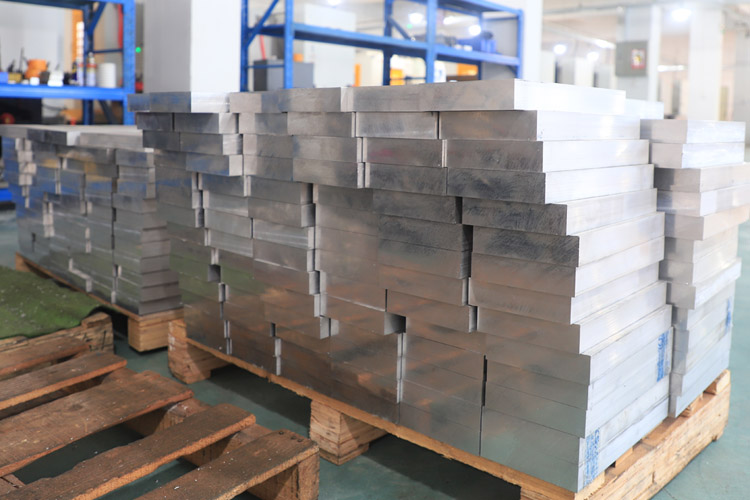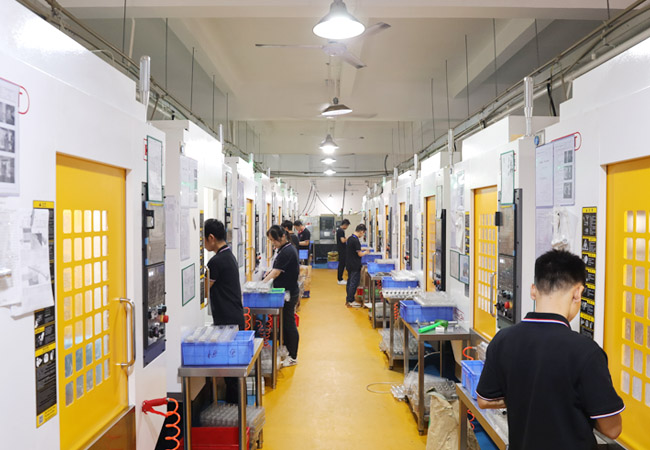What is Grinding? | Definition, Process, Types and Applications
In the world of CNC machining, you may have come across a dilemma: Is it difficult to achieve a precise surface finish on metal parts? Inconsistent grinding processes can lead to costly defects and machine downtime. Understanding grinding will help you optimize your machining processes to improve accuracy and life.
Grinding is a material removal process used to achieve precision surfaces, usually with high tolerances. The process uses a grinding wheel to remove small amounts of material, creating a smooth surface or specific shape. Wondering how grinding can improve the quality of your production? You can keep reading to learn everything about grinding, from its history to its wide range of applications.
What is Grinding?
Grinding is a precision machining process where abrasive wheels or belts are used to remove material from a workpiece. It is typically employed for achieving tight tolerances, superior surface finishes, and unique shapes. The grinding process generates friction between the abrasive surface and the material being worked on, breaking down particles to create the desired surface texture. Grinding is used in a variety of industries, including automotive, aerospace, and medical equipment manufacturing.
Historical Evolution of Grinding Technology
The origins of grinding can be traced back to ancient times when abrasive stones were used for sharpening and polishing tools. However, modern grinding technology began to take shape in the late 19th and early 20th centuries with the advent of grinding machines and abrasive materials. Over the decades, technological advancements like computer numerical control systems and superabrasive materials have transformed grinding into a high-precision process.
When Was Modern Grinding Invented?
Modern grinding technologies were first introduced in the 19th century. The development of powered grinding machines marked a shift from manual operations to more automated and precise processes. The introduction of CNC grinding in the late 20th century allowed for unparalleled precision and control, making it a cornerstone in today’s manufacturing industry.
How Does the Grinding Process Work?
Grinding works by rotating an abrasive wheel against the workpiece. The material is removed in small increments, allowing for high-precision and surface finish. The workpiece is clamped in place, and the grinding wheel is adjusted to the correct angle and speed. Each pass of the wheel removes a tiny amount of material until the desired shape or surface finish is achieved.
Operational Basics and Step-by-Step Explanation
Clamping:
The initial step in the grinding process involves securely clamping the workpiece. This is crucial for maintaining stability during the grinding operation. Various clamping methods can be employed depending on the material and shape of the workpiece. For instance, magnetic chucks are often used for ferrous materials, while mechanical clamps may be used for non-ferrous materials. Proper clamping prevents any movement that could lead to inaccuracies and defects in the final product.
Grinding Wheel Setup:
Setting up the grinding wheel is essential for effective material removal and precision. The correct wheel must be selected based on the workpiece material, desired surface finish, and type of grinding process. The wheel is mounted on a spindle, and its rotational speed is adjusted according to the specific application. Ensuring the wheel is balanced and correctly aligned helps avoid vibrations that can affect the quality of the grind and prolongs the wheel’s life.
Material Removal:
In this phase, the grinding wheel rotates at high speed, coming into contact with the workpiece and removing material incrementally. The depth of cut and feed rates can be adjusted to control how much material is removed with each pass. This stage is crucial for achieving the desired dimensions and surface finish. The grinding process is typically repeated multiple times until the workpiece meets the specified tolerances, ensuring uniformity and precision throughout.

Cooling:
To mitigate heat generated during grinding, a coolant or lubricant is applied. This cooling step is vital as excessive heat can damage both the workpiece and the grinding wheel. The coolant helps dissipate heat, reducing the risk of thermal expansion and warping. Additionally, it assists in flushing away debris created during grinding. Adequate cooling not only improves the lifespan of the grinding wheel but also enhances the overall surface finish of the workpiece.
Finishing:
After the main grinding operation, the finishing stage is performed to achieve precise dimensions and surface quality. This may involve making finer passes with a different grinding wheel or using polishing techniques. The goal is to remove any remaining imperfections and ensure that the workpiece meets strict quality standards. A well-finished workpiece will have a smooth surface, accurate dimensions, and the required tolerances, ultimately meeting the specifications outlined by the customer.
Dressing and Truing of Grinding Wheels
Over time, grinding wheels become clogged with material and lose their effectiveness. Dressing and truing restore the wheel’s cutting surface and shape. Dressing removes the unwanted buildup, while truing reshapes the wheel, ensuring precision grinding.
| Grinding Process | Description |
|---|---|
| Surface Grinding | Produces flat surfaces by moving the grinding wheel horizontally across the workpiece; ensures smooth and precise finish. |
| Cylindrical Grinding | Machines cylindrical parts by rotating both the grinding wheel and the workpiece; ensures high accuracy and excellent finish. |
| Centerless Grinding | Uses a grinding and regulating wheel without a fixture; ideal for high-volume cylindrical parts with tight tolerances. |
| Internal Grinding | Focuses on grinding the inner surfaces of cylindrical parts using a small rotating wheel; used for precision components. |
| Creep-feed Grinding | Allows deep cuts and material removal with a slow feed rate; ideal for tough materials and complex shapes. |
| Tool and Cutter Grinding | Sharpens and shapes cutting tools like drills and end mills; maintains tool geometry and efficiency. |
| Jig Grinding | Uses jigs to hold workpieces for producing complex shapes and holes with high precision. |
| Gear Grinding | Creates accurate gear teeth using grinding; reduces noise and improves performance in automotive and aerospace. |
| Thread Grinding | Grinds external and internal threads using a shaped wheel; ensures thread precision and consistency. |
| Camshaft and Crankshaft Grinding | Specialized process for grinding camshaft lobes and crankshaft pins to ensure engine performance. |
| Plunge Grinding | The grinding wheel enters the workpiece perpendicularly; ideal for precise depths and cylindrical parts. |
| Profile Grinding | Machines irregular shapes using custom wheels; used in aerospace, automotive, and mold making. |
| Form Grinding | Uses shaped wheels to produce intricate part contours; essential for precision components. |
| Superabrasive Machining | Uses diamond or CBN wheels to machine ultra-hard materials; delivers exceptional accuracy and finish. |
What Are the Different Techniques Used in the Grinding Process?
Grinding can be done in many different ways, depending on the material and the desired result. Some methods are fast and rough, while others are slow and extremely precise. Below explains the most common grinding techniques and what they’re used for:
| Grinding Technique | Description |
|---|---|
| Dry Grinding | Performed without any coolant or lubricant. It’s faster but can cause heat damage if not controlled. Good for materials that don’t need cooling. |
| Wet Grinding | Uses fluids to cool down the workpiece and reduce heat. Helps improve surface quality and extend tool life. Often used for delicate or heat-sensitive materials. |
| Rough Grinding | Removes a lot of material quickly. Used in early stages of machining to shape the part. Leaves a rough finish that needs further polishing. |
| High-Speed Grinding | Uses faster spinning tools to remove material more quickly. Requires special machines to handle the extra heat and speed. Ideal for mass production. |
| Vibratory Grinding | Uses vibration and abrasive media to polish and deburr parts. Great for complex shapes and smooth finishes. Often used after main machining. |
| Blanchard Grinding | A fast and efficient way to grind large, flat surfaces. Leaves a swirl pattern. Commonly used in heavy industries. |
| Ultra-Precision Grinding | Used when extremely tight tolerances and smooth finishes are needed. Perfect for aerospace, optics, and medical parts. Very slow but very accurate. |
| Electrochemical Grinding (ECG) | Combines grinding with electrochemical action to remove metal without much heat. Useful for hard or delicate materials, such as in medical or aerospace parts. |
| Peel Grinding | Uses a thin grinding wheel to make precise, shallow cuts. Great for small, complex parts with tight tolerances. Common in auto and medical industries. |
| Cryogenic Grinding | Freezes materials before grinding. Makes soft or sticky materials easier to grind. Used in plastics, food, and pharmaceuticals. |
What Are the Advantages and Disadvantages of Grinding?
What are the Advantages of Grinding?
High Precision and Tight Tolerances:
Grinding is renowned for its ability to achieve exceptionally high precision and tight tolerances. This capability makes it particularly advantageous in industries such as aerospace, automotive, and medical device manufacturing, where exact dimensions are crucial. The grinding process can produce components with tolerances as fine as a few microns, minimizing the need for further machining and enhancing overall production efficiency.
Suitable for Hard Materials:
Grinding is especially effective for machining hard materials that traditional cutting methods may struggle with. Materials like hardened steels, ceramics, and carbides can be processed with remarkable accuracy, allowing manufacturers to produce durable and high-performance components. This advantage is vital in sectors that demand strength and wear resistance, making grinding an indispensable process in the creation of robust industrial parts.
Excellent Surface Finish:
One of the standout benefits of grinding is the excellent surface finish it produces. The fine abrasives used in grinding wheels enable smooth material removal, resulting in surfaces that are free from defects and irregularities. This superior finish is crucial in applications requiring high performance and aesthetics, such as optical components and precision instruments, thereby enhancing the overall functionality and lifespan of the finished products.
What are the Disadvantages of Grinding?
High Initial Cost for Machines:
A notable disadvantage of grinding is the high initial investment required for purchasing grinding machines and equipment. Precision grinding machines often come with a hefty price tag, as they incorporate advanced technology and capabilities that exceed those of conventional machines. For smaller manufacturers or startups, this can present a significant barrier, limiting their entry into competitive markets that demand high precision.
Potential Overheating Without Proper Cooling:
Grinding carries the risk of overheating the workpiece and grinding wheel, particularly if cooling measures are inadequate. Excessive heat can damage the workpiece by altering its properties or causing warping. Additionally, overheating can reduce the lifespan of grinding wheels, leading to higher replacement costs. Effective coolant systems are crucial in managing temperature during grinding operations, adding complexity to the process.
Requires Skilled Operators:
The grinding process demands a high level of skill and expertise from operators. Selecting the appropriate grinding parameters, machine setups, and monitoring the process requires considerable knowledge and experience. Inexperienced operators may struggle to achieve the desired results, potentially leading to poor surface finishes and dimensional inaccuracies. The need for skilled labor can increase operational costs, emphasizing the importance of training and development in grinding operations.
Is the Grinding Process Expensive?
Grinding can be perceived as an expensive machining process, especially when considering the costs associated with specialized equipment and abrasives. The initial financial outlay for high-quality grinding machines can be substantial, particularly for businesses aiming for high precision. While labor costs and the potential for costly mistakes add to the overall expenses, the high level of precision and superior surface finishes offered by grinding often justify these investments. Ultimately, the long-term benefits, including improved product quality and reduced rework, frequently outweigh the initial costs.
Areas of Application of Grinding?
Grinding, as a precision machining process, finds its application in a wide range of industries and scenarios. Here are some key areas where grinding is commonly used:
| Application Area | How Grinding Is Used |
|---|---|
| Metal Machining | Removes burrs, rust, or old coatings from metal surfaces; also used to shape and size metal parts precisely. |
| Stone and Ceramic Processing | Smooths surfaces, removes cracks or marks, and helps shape hard, brittle materials like tiles and ceramics. |
| Optical Glass Manufacturing | Polishes glass to remove small defects and improve clarity and shape accuracy for lenses and optical parts. |
| Electronics and Semiconductor | Used on silicon wafers and ceramic parts to improve flatness, remove surface issues, and prepare them for circuits or solar cells. |
| Wood and Furniture Making | Smooths wooden surfaces, removes splinters or marks, and gets the surface ready for painting or finishing. |
In Conclusion
Grinding is a critical process in modern manufacturing, offering high precision and versatility. It involves using abrasive tools to remove material from a workpiece to achieve a desired shape, size, and surface finish. Understanding its various processes, such as centerless grinding, surface grinding, and cylindrical grinding, as well as the specific applications in fields like metalworking, automotive, aerospace, and electronics, ensures optimal results.

Choose VMT as your partner, you will enjoy tailor-made grinding services. We focus on meeting the specific needs of metal, non-metal and composite material processing, and provide practical and effective grinding solutions for different industries with advanced grinding technology, rich practical experience and professional service team.
Frequently Asked Questions About Grinding
What is the Process of Tool Grinding?
Tool grinding is a precision machining process where grinding wheels are used to sharpen or produce new cutting tools. It ensures that the tools have the correct cutting geometry for various industrial applications.
What is the Difference Between Wet and Dry Grinding?
Wet grinding involves using coolant or water during the grinding process to reduce heat, increase precision, and improve the surface finish. Dry grinding, on the other hand, is performed without liquid coolants and is generally faster but may cause overheating.
What is the Working Principle of the Grinding Process?
The grinding process works by using abrasive particles on a rotating wheel to remove material from a workpiece, producing a desired surface finish and shape. The abrasives act like tiny cutting tools, shaving off material.



